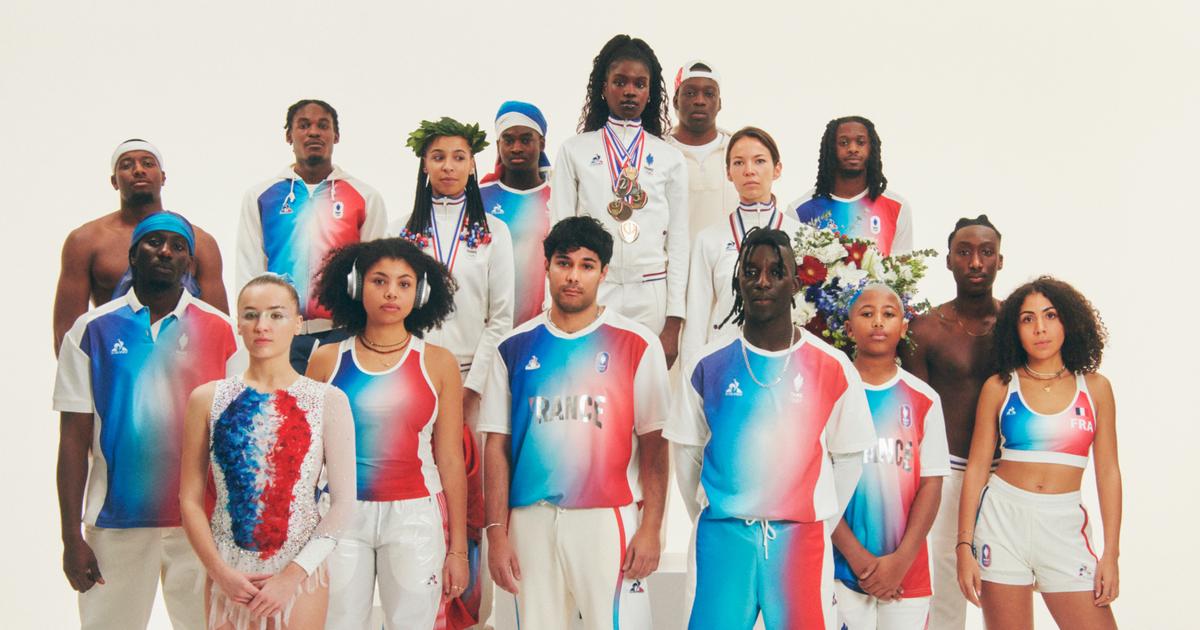On the eve of the big presentation, Stéphane Ashpool is very busy but happy. His pharaonic project in collaboration with Le Coq Sportif is coming to an end. He designed the entire wardrobe of some 840 French athletes (3200 people including their technical staff) in the sixty or so Olympic and Paralympic disciplines. More than 150,000 items are divided into "performance" outfits worn during events, and off-field outfits for training, medal ceremonies and press conferences. It is at INSEP, where he has visited many times over the past two years, in the middle of a photo shoot of his "looks", that we find the Parisian stylist.
Stéphane Ashpool Alex Cascallana
LE FIGARO. - What was the biggest challenge of this extraordinary project?
Stéphane ASHPOOL. - Obviously, because we are talking about Olympic outfits, there are a lot of institutions, federations that, for some, are used to working with their official equipment suppliers, and opinions to be taken into account. The specifications are therefore quite complicated! As the creator and founder of my own brand (Pigalle, editor's note), I had never needed to show "creative diplomacy" until now... And at the same time, I hadn't had to work on such an important project either. I really enjoyed working in this context and I am, overall, very happy with this collection that we have managed to produce as much as possible in France or nearby, in Morocco, Portugal, Spain. That was the biggest challenge!
Given the different constraints in different disciplines, how did you manage to create stylistic coherence within this gigantic collection?
This is the first time that a single equipment manufacturer, in this case Le Coq Sportif, has manufactured all the uniforms of a national team during an Olympiad. Usually, whoever wins the tender takes care of the "representation package", i.e. the outfits worn by the athletes when they stand on a podium or go to a TV set. This time, it was a question of dressing them for all their activities during the competition, from the training phases to the events, including the free time in the Village. Each of them will receive an endowment of about 80 pieces. From the beginning, I wanted to dress them in a contemporary way, not to disguise them, nor to overplay the prints that blow your mind, but simply to be inspired by a certain idea of French elegance, through a sum of small details, a topstitching, a ribbed edge, the finishes on an embroidered patch. The common thread of this collection is this "new" gradient French flag, no longer with these three stripes of blue, white and red but a gradient of blue that goes into white and white that goes into red.
Who was the most restrictive disciple?
Each for different reasons. For judo, for example, there was already a logo. Like judogis, judokas' kimonos are traditionally made in Japan: managing to produce them in France, finding the right density for the canvas, the right knitting, was a real challenge. There's also the sailing equipment, for example, which requires insane waterproofing. In cycling, the slightest extra gram on the riders' suit impacts their positions at the finish line. There are a lot of little things like that that you discover along the way. But the most complex, and I repeat, was to find these materials "locally". Other equipment manufacturers would surely have found the same technicality by manufacturing in Asia. But indirectly, we were keen to reindustrialise our territories a little, in any case to support suppliers and factories, including knitters in the Aube and the Troyes basin (where Le Coq Sportif is historically located). All logos are embroidered in France. All the outfits for the medal ceremonies were produced in France, from A to Z, from the material to the finishes.
The judokas' outfit for the Paris 2024 Olympics Pauline Scotto di Cesare
And the most challenging?
There are two sports that have touched me in particular: skateboarding and gymnastics. Skateboarding because it is the discipline for which the garment is most linked to the personality of the athlete. Without his baggy and T-shirt, in a more institutional outfit, the skater loses his identity. The idea was to keep that spontaneity. And gymnastics because when I looked at the gymnasts, I felt like I was seeing little rats from the Opera - my mother was a dancer at the Opera. I am very much in awe of the iron discipline and self-sacrifice that this sport requires.
Some pieces are sold in the official Paris 2024 and Le Coq Sportif boutiques. Have you also worked with this in mind?
My initial goal was to please the athletes. That's why the Paris 2024 committee and Le Coq Sportif came to me in the first place and that has always been my driving force. After all, these athletes have very different bodies, environments and personalities. So if they like the collection, I imagine it can appeal to as many people as possible.

